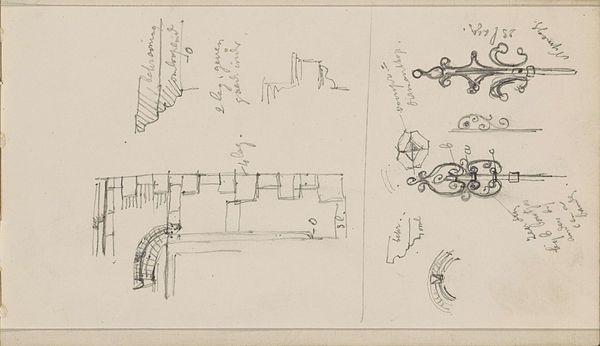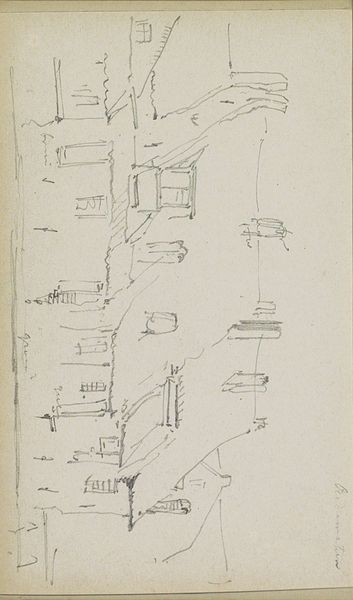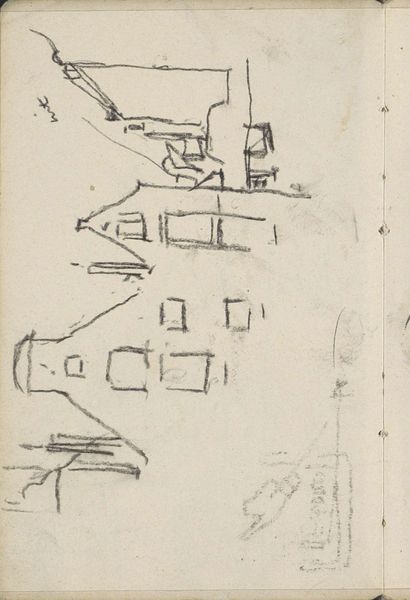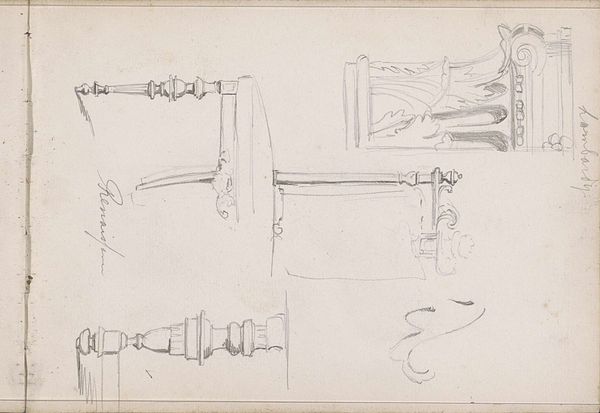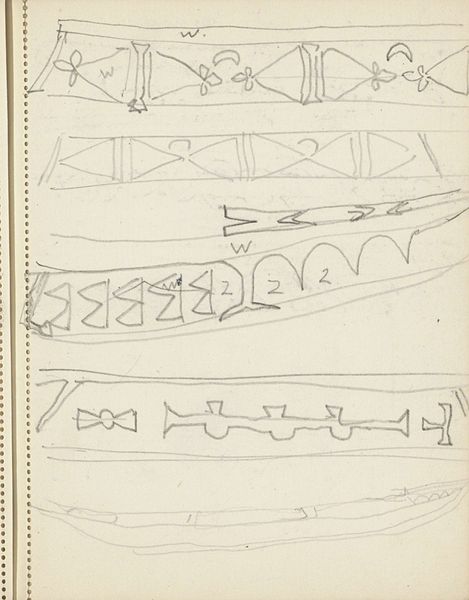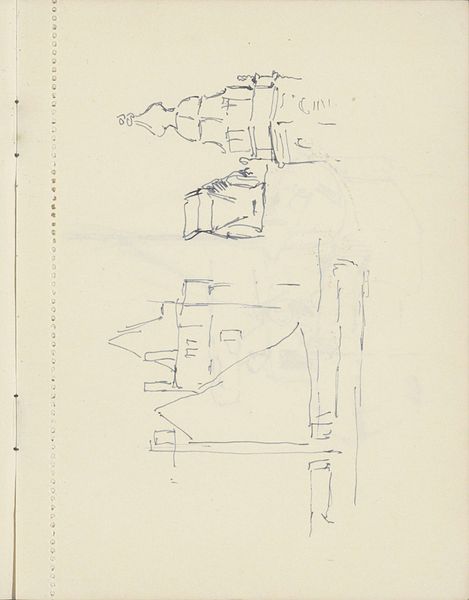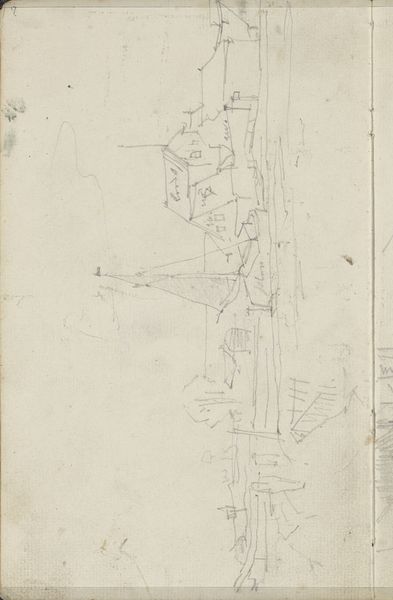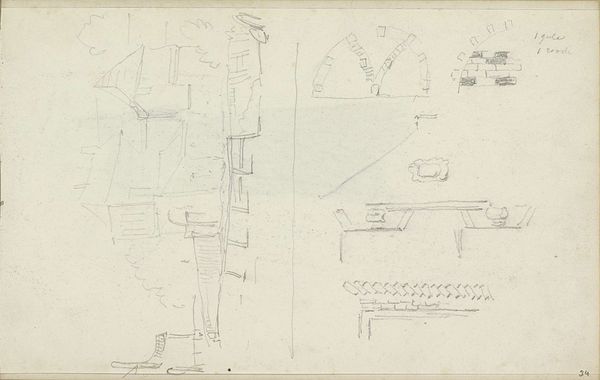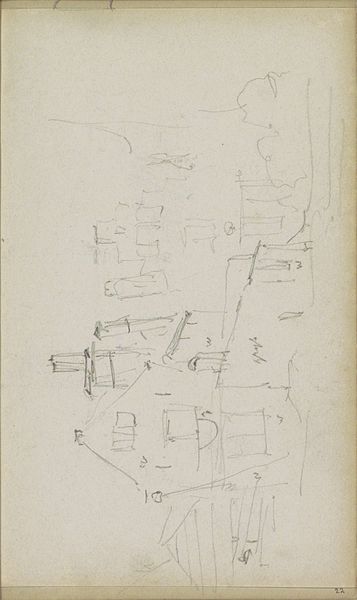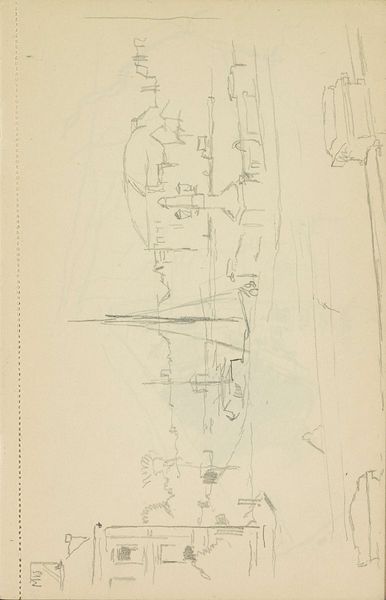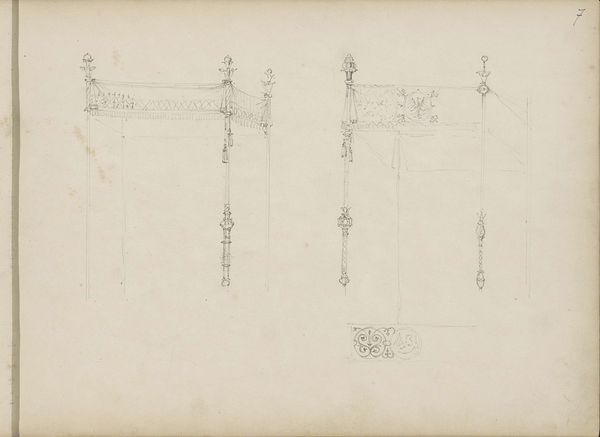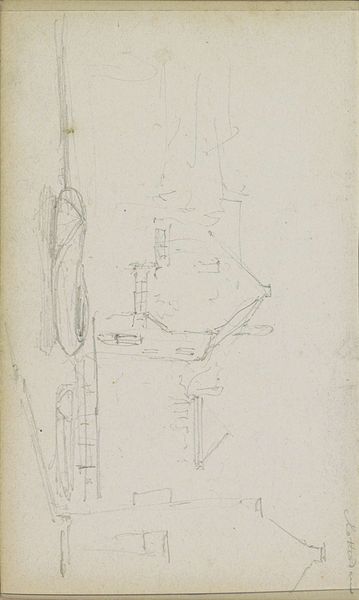
drawing, paper, pencil, architecture
#
drawing
#
landscape
#
river
#
paper
#
form
#
pencil
#
line
#
cityscape
#
architecture
Copyright: Rijks Museum: Open Domain
Editor: So, this is "Rivierlandschap en architectuurstudies," or "River Landscape and Architectural Studies" by Adrianus Eversen. It’s a pencil drawing on paper, and dates from around 1828 to 1897. It feels like looking at an architect's sketchbook, kind of raw and immediate. What do you make of the composition? Curator: Well, what strikes me immediately is the emphasis on recording architectural forms, probably in preparation for later, more formal paintings. It reminds us that even seemingly 'objective' depictions of cityscapes are the product of a selection process, reflecting particular socio-political interests. Eversen chooses these angles and details. Why, do you think? Editor: I suppose he might be drawn to the order and structure... these are very precise linear representations. Maybe he was trying to capture a certain idealized form of civic order? Curator: Exactly. And this order has consequences. Think about who gets represented in these idealized cityscapes, and who gets left out. Whose stories are told? Notice there are no people in this drawing. Was this intended for public display or more likely a private collection of studies, useful for the creation of other works that reinforced power structures within Dutch society at that time? Editor: That makes me think about how artists at this time would be supported through commissions, right? And what kind of image these patrons wished to project of their city and influence. Curator: Precisely. And these ‘objective’ architectural studies play a subtle yet vital role in reinforcing such socio-political narratives of civic pride, commercial success, and historical legacy that benefitted the elite class. It would be fascinating to study the subsequent works that emerged from this sketch. Editor: That’s a very interesting perspective. I had initially focused on the simplicity of the drawing itself. Now, I can also think about its potential place within a larger political context. Curator: Yes. Art isn’t just about aesthetics, it's always embedded within the systems of power and representation of a particular time. We are simply tasked with interpreting these narratives for the public, even in the briefest of moments.
Comments
No comments
Be the first to comment and join the conversation on the ultimate creative platform.
